‘Final Fantasy VII Rebirth’ Is a Beautiful Idea At War With Itself
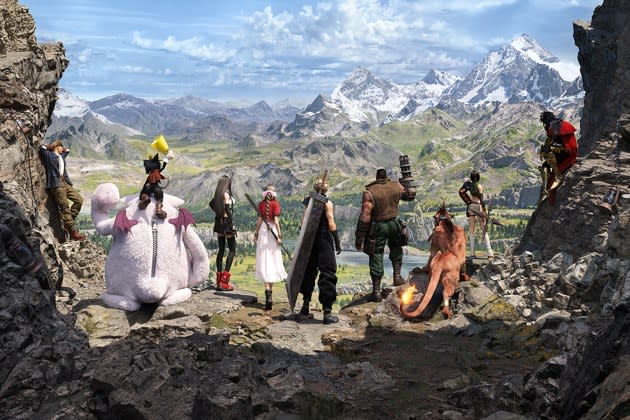
In the luddite days of the Nineties, there were a handful of ways to discover a new video game: You could hear about it in the schoolyard from that one kid who swore that their older brother got a copy straight from Japan. You could read about it from a more legitimate source, like a magazine you picked up at Borders. Or you could inevitably stumble across a commercial on TV. That last one, that’s how I discovered the original Final Fantasy VII. But unlike other game commercials that relied on near-traumatic, Nine Inch Nails-inspired visuals, Final Fantasy VII’s ad played like a trailer for a movie, one the voiceover itself declared “would never come to a theater near you.”
And that’s all it took. Without knowing a single thing about Final Fantasy, or even owning a PlayStation, I knew that this was something I had to have. And to be fair, the ad didn’t oversell. Final Fantasy VII was likely the most epic game ever released at the time. A sprawling fantasy drama with noir-ish, retro-futuristic vibes, it was unlike anything I’d ever seen — or anyone had seen in the industry. Making the leap from the sprites and parallax effects of the SNES era, it ushered in a new vision for gaming with mind-melting cinematics, 3D models on beautifully pre-rendered backdrops, and a sweeping orchestral score courtesy of the PlayStation’s CD-ROM format. It was so massive that it took three of said CDs to house the full game.
More from Rolling Stone
And with that game, Squaresoft and PlayStation created a dynasty; 27 years later, it’s still considered the pinnacle of the franchise, and for good reason. Its very particular blend of pathos and camp, wrapped in ecological and anti-corporate warnings, still works like gangbusters and, although often imitated, it remains unique. It’s a game where you slay dragons, jockey race on giant chickens, and stick it to man and demi-gods in equal measure, all the while hanging out with a robot cat who tells fortunes. It’s the kind of game that many would say “couldn’t be made today.” In some ways, they’re right.
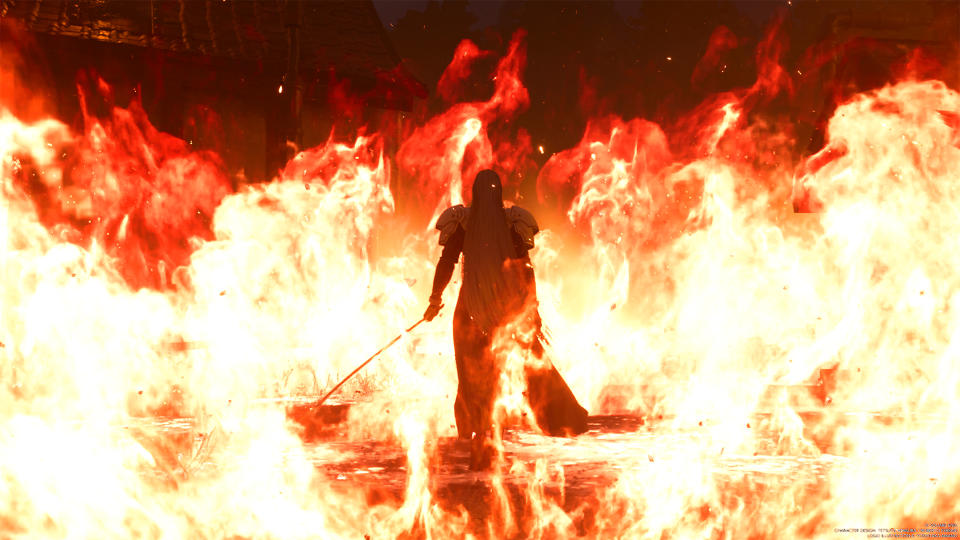
But it can be remade, and after a 15-year tease following a 2005 PlayStation 3 tech demo, Square Enix managed to weaponize its nostalgia with the release of 2020’s Final Fantasy VII Remake. But there was a twist. The remake would only cover a portion of the game, admittedly the most famous part: Midgar. A soft reimagining, it would follow the original game’s first act or so, introducing the major players and world before leaving things open for the real story — or so we thought, because there was yet another twist. To surprise fans and satisfy the developers who themselves seem bored by the idea of a 1:1 retread, the story would take some oddball turns late in the mix, diverging from its well-known beats into a meta-narrative wherein the characters themselves must defy the fate we know them to have. From there, the stage was set for an unknown journey across an entire trilogy of games (another three discs!).
And that’s where Final Fantasy VII Rebirth picks up. The second game in this new trilogy, it follows Cloud Strife, an ex-soldier turned mercenary, and his friends, including his childhood friend Tifa, machine gun-armed eco-terrorist Barrett, talking dog/tiger thing Red XIII, and fan-favorite, Aerith, a plucky florist whose Very Important Lineage™ may be the key to saving the world. It’s Aerith’s fate, one of the most famous twists in all of gaming, that drives most of the intrigue for fans wondering how this new timeline will play out.
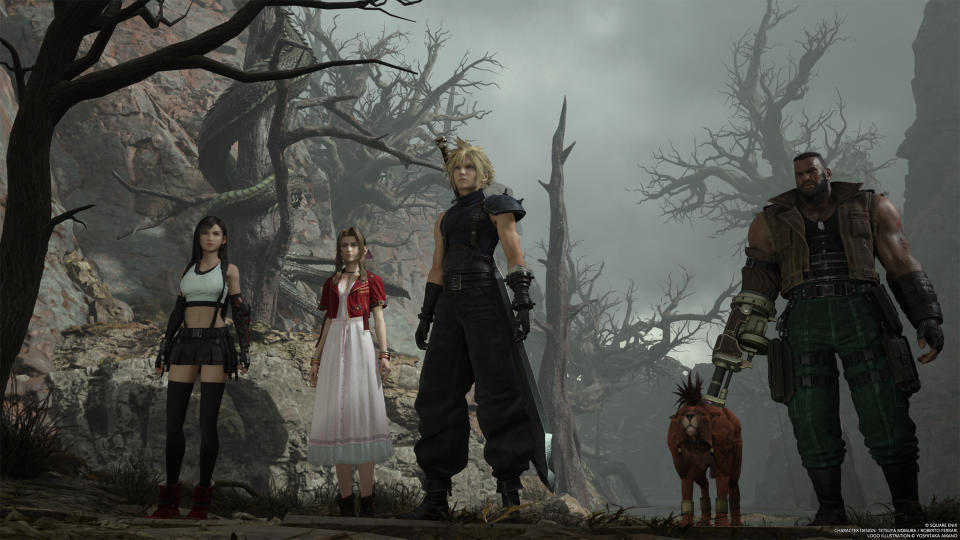
But what’s most surprising is how much doesn’t change. Without delving into spoilers, much like how 2020’s Remake mostly stuck to the script while expanding on the game’s characters and lore before taking a huge departure, the plot of Rebirth isn’t a wholly new story. In fact, fans of the original game may be shocked by how much remains intact, from famous locations, characters, and story beats. Driven along the path to defy their fate, the characters will actually end up in many of the exact same scenarios as before, albeit with a different meta-narrative guiding them.
That isn’t to say that there’s nothing new. In fact, the genius of Rebirth is how frequently it blends aspects of the original story with new details and faces. Like an old memory or dream, there’s the persistent feeling that this is all so familiar, but just slightly askew. Was this character really here for this scene? Did it actually play out like this before, or am I misremembering? These questions linger throughout the bulk of the story to the degree where things that feel new are actually quite old, and scenarios that you’re certain are happening just as they did the original are most definitely not. It’s a neat trick implanted by the developers by simply begging the question of what might change, in turn forcing players who may have not played the game in decades to feel a constant state of uneasy curiosity, even when things are mostly the same.
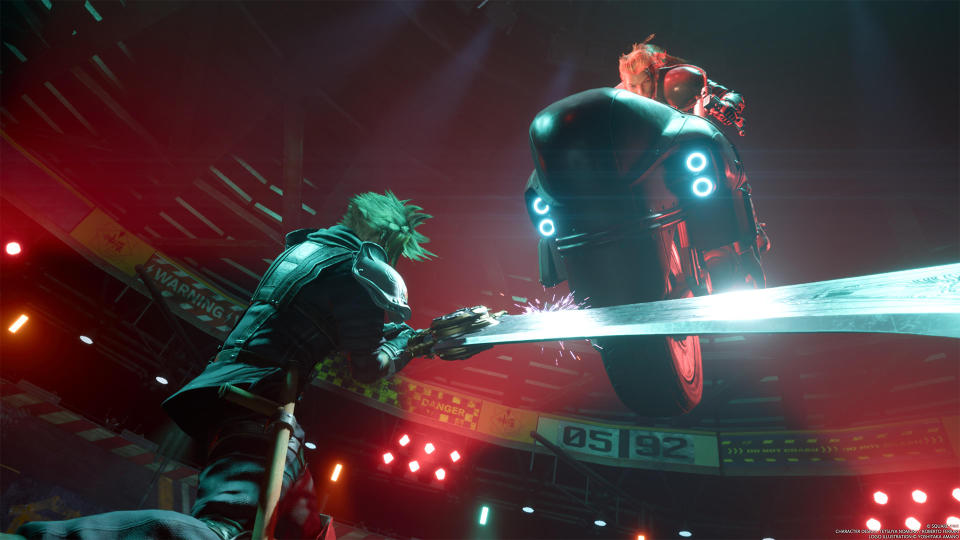
However, it presents a double-edged sword. There’re points in the game where the addition of details — both old and new — becomes encumbering. Characters from the series’ ancillary media and spin-offs are woven into the story retroactively to create a master text from the piecemeal lore created by years of spin-offs, but not all of them work. For players who only played the original, they’re out of place. For new players, many of them are presented without deeper context, treated like character appearances in late-stage Marvel films, whose purpose exist as a callout or tease to unfamiliar plotlines that aren’t resolved or remotely set up. On the surface, they can all be taken as stock characters, but the game goes through great lengths to let you know X person has a deeper story, but one for another time. It creates a strange dichotomy where, while there’s a clear narrative at play, the niggling feeling that there’s always something you don’t know, and even when you do, the concept of the “unknown journey” creeps back into your head to ponder if there’s something else that you’re missing, even when you’re not.
None of this is more evident than with the character of Zack. In the original game, Zack is a minor character who serves as a footnote. He has ties to both Cloud and Aerith and plays a part in some real Lynchian mind and reality distorting identity crises later in the story, but as someone who dies before the events of the main game, he functions as a lynchpin in their character arcs rather than being vital himself. He would gain his own cult fandom after starring in the spin-off title, Crisis Core, but only has a role here after Remake teased that they may still be alive in this new story.
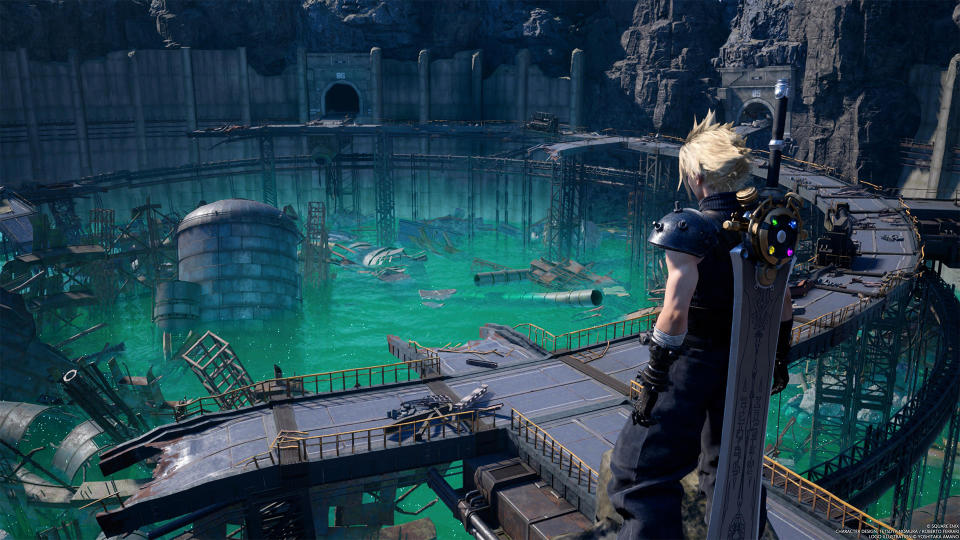
To put it simply, his presence doesn’t bring anything to the main story. His subplot serves the meta-narrative, but the nature of it conflicts with what’s happening moment-to-moment. His inclusion – like much of the meta story – feels more like fan service (and sadly fanfic) than anything essential to the plot. They both turn what is a mostly wonderfully executed linear story into a parabola for the sake of keeping players on their toes, with a little extra love for Tumblr posters just excited to see their digital man crush Zack finally on the bench for the big leagues.
By the end of the game, I felt exactly the way I did in 2020 after finishing Remake: This would’ve been a much better story had they just played it straight. Embellishments and expansions, sure. Mix things up. But as it stands it remains a lavishly made meal that goes off the rails once the TikTok chef gets cooking.
That sense of having too much of a good thing could also apply to the gameplay. Remake has the difficult task of transforming the original game’s innovative ATB (Active Time Battle) systems for turn-based combat into something more action-oriented, and did so spectacularly. Where later games in the series like Final Fantasy XVI would shift almost entirely to a beat ‘em up mindset, Remake balanced whip-fast ass kicking with on-the-fly, yet effective command-based decision making. All of that applies to Rebirth, and them some. Then some more! Mostly adapting the combat as it was, there are now new layers added in the form of Synergy Skills and Synergy Abilities. An evolution of what was introduced in Remake’s DLC INTERmission, these function as duo moves that feature two of your party members syncing up for a shared attack. Skills can be used at any time while blocking, helping players fight back while under duress. Abilities require their own version of the ATB meter to be filled by multiple characters, and have greater rewards like granting infinite magic points or increasing ATB gauges.
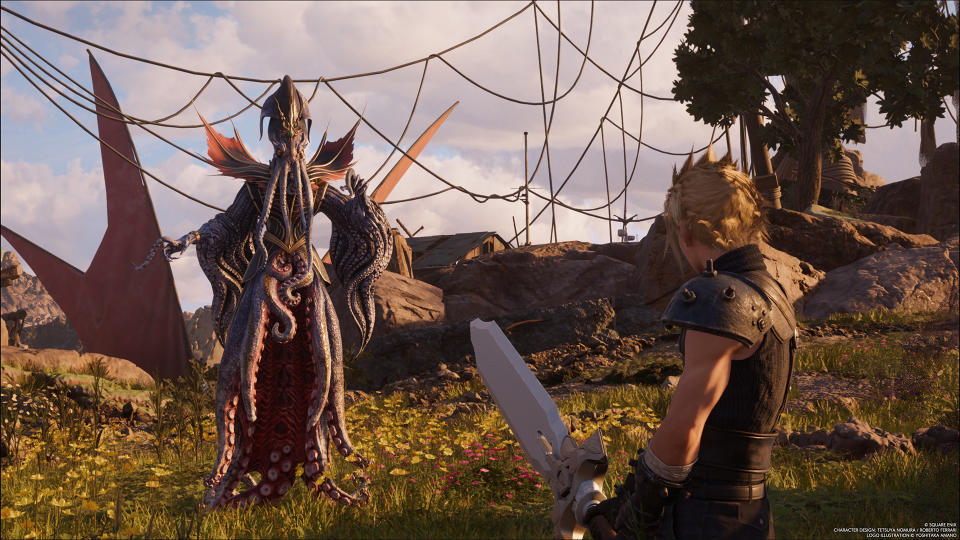
Individually, they’re great additions, but on top of what’s already presented, there’s a lot to keep track of in any single encounter. Between attacks, abilities, magic, items, limit breaks, and summons, adding two more layers (and an additional meter to watch), they can be overwhelming. I found that it wasn’t until almost the end of the game that I had actually gotten the hang of balancing the new mechanics with the tried and true that got me through Remake on Hard Mode. Never mind the fact that I also didn’t know which pairs had what combos available to them because everyone’s individual skill trees were a mess. In New Game+ / Hard Mode, where items are gone and MP is limited, they’ll likely be essential to completion, but in the main game they’re easily forgotten.
However, one area where too much isn’t enough is in the game’s open world exploration. Remake, by its nature, was a very linear experience. Stuck within the confines of Midgar, the game played out in straightforward chapters with a handful of missions in larger areas, but lacked the open world most RPGs relish. It made sense — in the OG VII, the open world began after Midgar, but it’s astonishing what a difference it creates. From the onset, the game is massive, which each chapter or two introducing a new region teeming with towns, quests, towers, and marks. This too, can feel overwhelming, as the game instantly introduces you to five to six types of landmarks you’ll need to watch out for. While this sounds like the industry standard copypasta of a Ubisoft game, it’s astonishing how well Square Enix has managed to make this loop work. Not once through my 80-hour initial run was I ever inclined to skip a region’s side content, which is surprising in an era where many other games’ open-world padding amount to mindless side-quest grinding best done while listening to a podcast.
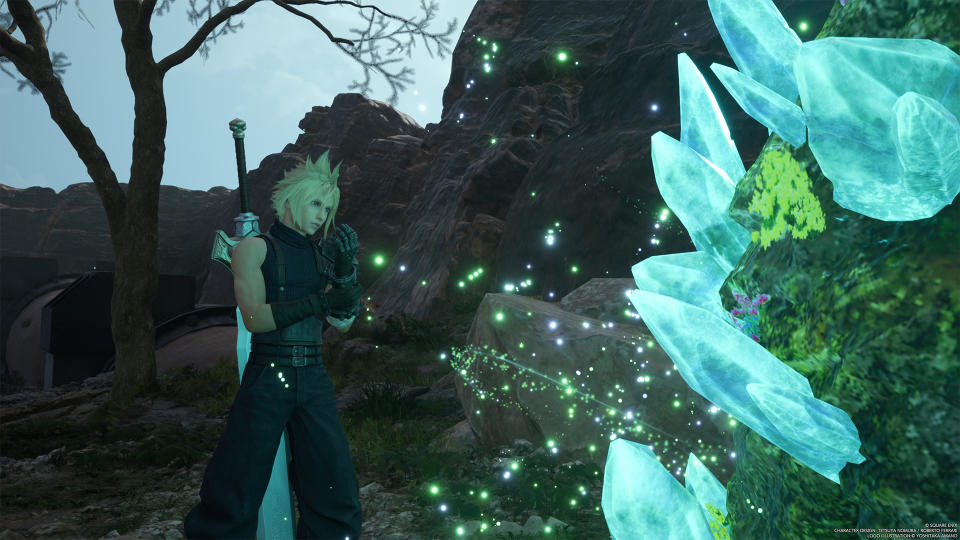
Conversely, Rebirth had me consistently engaged in not just finding every marker on the map, but listening intently to the scenario, dialogue, and lore that played out. It’s a testament to the adherent goofiness of the FFVII world that playing hide-and-seek with chocobos and taking orders from a clone boy named Chadley is inherently as engaging as the main story at hand. I’d argue that the open world elements of Final Fantasy VII Rebirth are the best of any game in the series, and most other games in the field. It’s been stated by the devs that much of what you see is inspired by games like Horizon Forbidden West and The Witcher 3, and it manages not just to live up to those lofty standards, but often surpass them by remaining consistently surprising and engaging.
One other factor that plays heavily into the success of the game’s open world is lifted directed from the original: incredible minigames. Throughout every region and town, there’s a venerable smorgasbord of diverse minigames to play. Some are tied to individual quests or remain part of the regional exploration questlines (think: Fort Condor or anything at the Gold Saucer), while others permeate and grow throughout the entire game. Overall, it can be a mixed bag, with players occasionally forced to overcome difficulty spikes in some awkwardly designed games for essential progress through the main game, but most of them are a delight. Outside of the Like a Dragon series, you’d be hard pressed to find better or more addictive micro bites of gaming bliss.
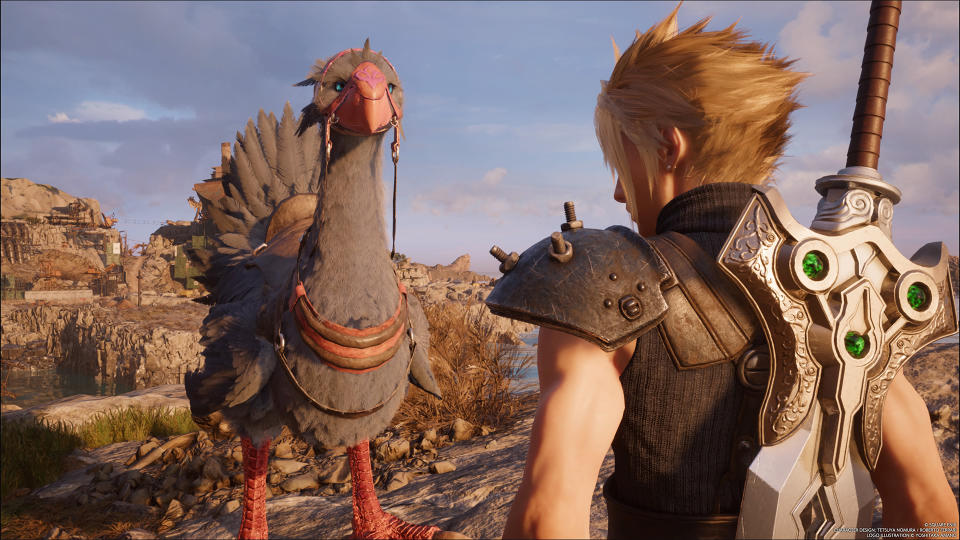
One standout is, of course, Chocobo Racing, which makes its return as the single most addictive time suck from the OG game there is. Here, it plays closer to a kart racer, but remains a customizable experience with far less hourly commitment to breed the perfect racing machine than the original. The best, however, is the game’s perquisite card battler, Queen’s Blood. A meaty turn-based card game that allows players to build their deck throughout the game as they garner expansion packs, it’s part of the lineage of RPG card games that slap alongside the all-time GOAT, The Witcher 3’s Gwent. It also has the luxury of being woven into its own ghoulish subplot that pays off on the hours invested honing in on perfecting strategies.
It’s hard to walk away from a game like Final Fantasy VII Rebirth with just one take. As an evolution of its predecessor, it’s transcendent. The story is richer, with deeper characterization for the existing cast, the introduction of new ones that feels vital, and a generally satisfying main narrative at play. The combat, despite being initially overwhelming, is a masterclass in action-RPG gameplay that feels snappy and rewards both pre-strategizing and on-the-fly decision making. The exploration is artfully curated and stands among the best in modern gaming, despite being broken into regions requiring fast travel.
At its best, it feels like the true realization of what the developers of Final Fantasy VII ’97 wanted to create. On the other hand, it can also feel like too much — primarily when the meta narrative and aimless subplots encroach on what could’ve been a flawless reimagining of a timeless game. Sometimes, you just want the game to get out of its own way. Buried beneath the fanfic is the perfect version of the Final Fantasy VII experience. When it’s just that — which it is, for dozens of hours — it’s an experience that makes its predecessor look like a tech demo and puts the series’ previous cinematic highpoints to shame. If the next entry can maintain this ratio of success, the trilogy could supplant the original as the definitive Final Fantasy experience.
Final Fantasy VII Rebirth launches on PlayStation 5 on Feb 29.
Best of Rolling Stone

